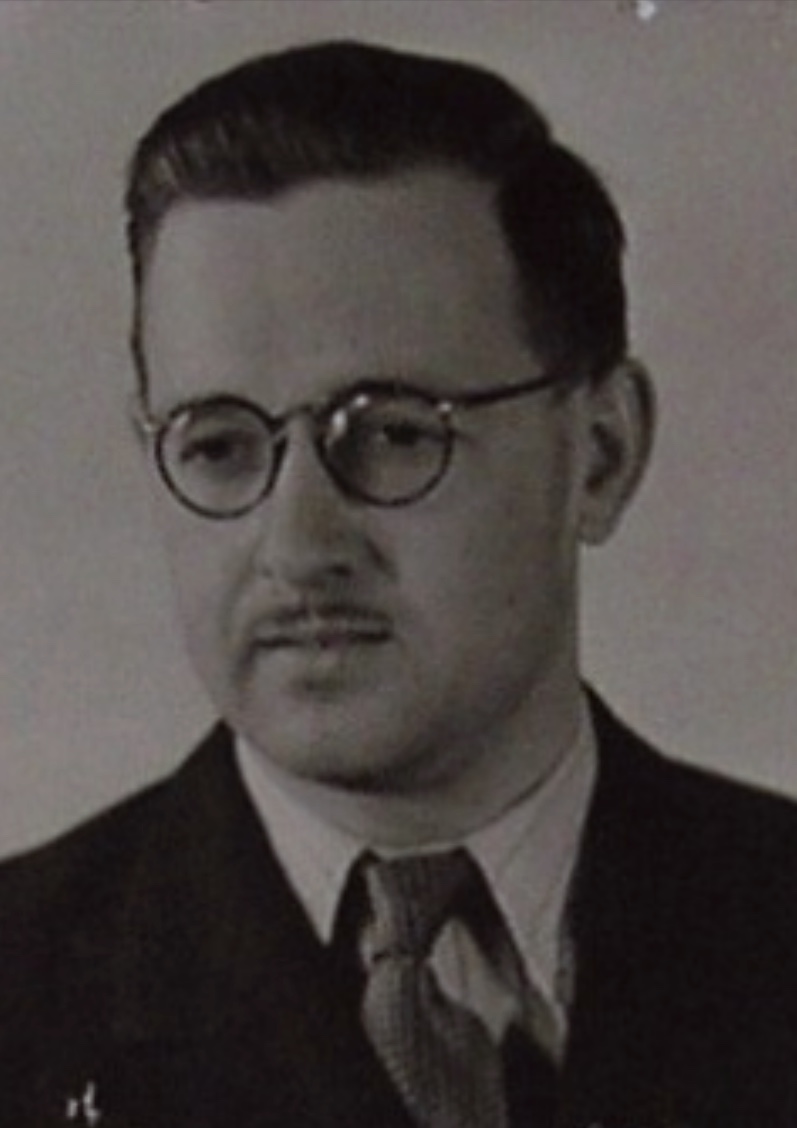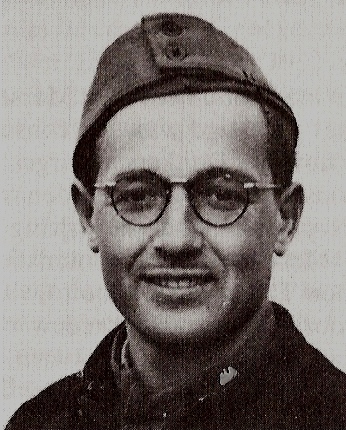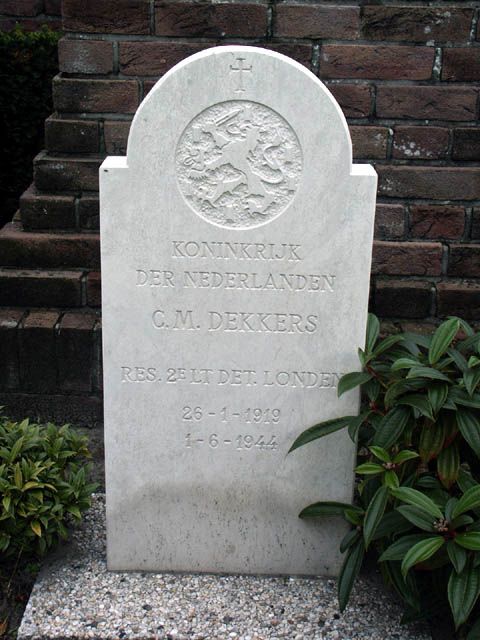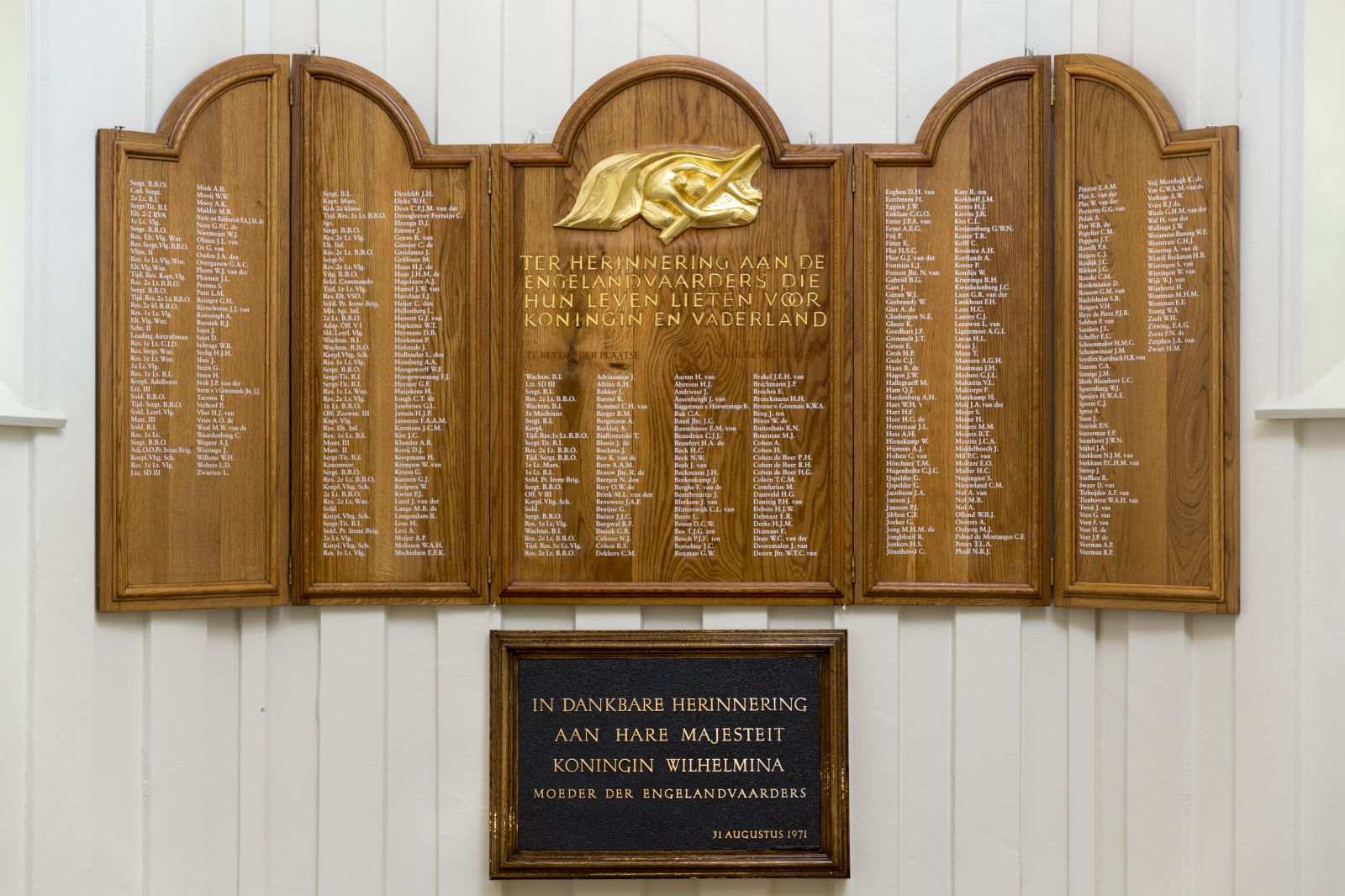Cornelis Martinus Dekkers
1919-1944
Oorlogsslachtoffer
Is 25 jaar geworden
Geboren op 26-01-1919 in Breda
Overleden op 01-06-1944 in Gilze en Rijen
Rang
Militair onderdeel
Onderscheiding
KvV.
Afbeeldingen
Bijdragen
De volgende bijdragen zijn door bezoekers toegevoegd:
Monument Korps Militaire Administratie
Op de Dumoullinkazerne te Soesterberg, staat op het Logistiek Ereplein het monument van het Korps Militaire Administratie. Hierop staan de 144 namen vermeld van militair administrateurs. Op het monument staat de tekst:" Die voor handhaving van orde en vrede het leven lieten".
Geplaatst door Henry Hoving op 14 april 2021
Cornelius Dekkers, SOE-trained wireless operator
Cornelius Dekkers, sometimes spelt Duiker, was born in Breda on 25 January 1919, was one of ten children and spoke eight languages, three of them fluently. Like Gerrit Kuenen, he escaped from Holland via Perpignan, spent time in a Spanish prison...
Lees meer
Cornelius Dekkers, sometimes spelt Duiker, was born in Breda on 25 January 1919, was one of ten children and spoke eight languages, three of them fluently. Like Gerrit Kuenen, he escaped from Holland via Perpignan, spent time in a Spanish prison and reached England via the United States. After joining the 6th Infantry Regiment in the Dutch Army, he was recruited by SOE in July 1943. Using the cover name Kees van Duin, he was assessed at grade C after four days at Winterfold (STS 7). His instructor described him as ‘A highly intelligent man with a quick active mind and ample energy. Cheerful, friendly and loquacious. Has a good practical sense and a great desire to do well. Is, however, over confident which inclines him to be slapdash and at times careless in planning. It is felt that his shortcomings should be remedied in training. Will probably make a good instructor. (TNA HS9413/8, 12 August 1943)
After four days at the flat, and ten days at West Court (STS 6), Sgt. Hartog described him as having a ‘Pleasant personality, no bragging – told me of his escape through France and Spain and seems to have plenty of courage when put to the test. His correspondence consists mainly of members of the Dutch Forces. He shows great interest in the whole course and is very keen on W/T operating. On knowing this student a little longer, he proves to be of a steady type, handles his money well and does not squander it. He is very intelligent and possesses plenty of common sense. He thinks first before he acts. He is security minded and behaves accordingly. […]
The other day when they had a few drinks at the local Inn, and M.7 was decidedly getting a little under the weather and singing loudly on the way home, he pointed out to him, that this was not exactly the way for a Dutch Sergeant to behave in public. This was on the occasion of the surrender of Italy and having been paid on this day, made it an excuse to celebrate but he felt sorry for it the next morning.
He shows great keenness as the course progresses and works well when out on schemes. He is enjoying all his training and especialy is very handy and uses plenty of common sense when making up charges etc. on map schemes he is quite good and he told me, that he did plenty of similar work e.g. map reading and field craft when he was with the Scout movement in Holland. He is security minded and if anything very much reserved and keeps what he knows to himself, which is a good sign. He also drinks only moderately and so he has not exactly a dislike for women he is very careful in his selection. (Ibid, 20, 27 August, 3, 10 September 1943)
After four days at Ringway he was described as having done very well and enjoyed the course. ‘The Air experience trip was nothing to him as he had done a good bit of flying before. As for the jumping by parachute, he enjoyed it and was sorry when it was all over.’ (Ibid. 1 October 1943). After a fortnight’s leave he was sent to Thame Park (STS 52) for three months’ intensive wireless telegraphy training. Capt. Clitheroe’s comment was that he was ‘Reliable, level headed type. Excellent in every way.’ (Ibid, 30 January 1944)
After a few days at the Howard Hotel in London and a trip to Swansea, on 6 February 1944. he was sent to Boarmans (STS 36), one of the country houses at Beaulieu, for clandestine warfare training. His instructor commented that ‘This young man has been well and widely educated and has considerable academic intelligence. He is, however, not very practical, and is sometimes inclined to be muddle-headed, is rather lacking in shrewdness and sound judgement, neither has he much imagination. He seemed quite keen and worked hard, but was inclined to be obstinate and argumentative and to try to justify his mistakes. He is conceited, over confident but did not create the impression of having a very strong character. He is, however, honest and trustworthy within these limitations. His personality is quite pleasant, he is sociable and a good mixer, although, at times, his cocksure manner is rather irritating. He should make quite a capable W/T operator but would require firm handling. He has not much power of leadership. (Ibid, 22 February 1944)
As there was no prospect of a flight back to Holland, he was taken to London and Glasgow before spending three weeks at Hatherop Castle (STS 45), near Fairford, Cirencester, and a week at Stodham Park (STS 47 but used to be STS 3). Before visiting the flat for his preparation and briefing, he stayed at St Anne’s and Green Park Hotel. Like Kuenen, he went to Howbury Hall (STS 40) for the ground-to-air communication course with S-phone, Eureka and reception committee personnel before being taken to Gaynes Hall to wait for the flight.
Like Kuenen, Dekkers’ mission papers were also in his file. Those instructions specific to him which are worth including: -1. INFORMATION
There are several well-known underground organisations in HOLLAND, but as very little success has been experienced in the past owing to arrests, it is feared that most of the larger organisations have been penetrated by the Gestapo.
Mr. KLIJZING, who was inspector of Police in THE HAGUE, was asked prior to his leaving HOLLAND to arrange delivery of arms to organisations in the North and South of Holland. It is believed that these organisations may still be safe. […]
2. INTENTION
You will go to HOLLAND as a W/T operator and a liaison officer to a man whom you will know as Mr. MULDERS. You will contact Mr. MULDERS direct or through his cut-outs […]. When you are satisfied that you are in contact with the Mr. MULDERS and as soon as he is satisfied with your bona fides, you will hand to him the directives […] which you will take with you in the form of a microphotograph, and explain to him that you have been sent to act as his operator for communications between him and LONDON.
You will leave him to decide whether or not he considers the various organisations with which he is in touch are capable of carrying out the directives and safe from a security point of view, or whether he could form a small organisation from the nucleus of his best and safest contacts.
You will explain to him that W/T operators and sabotage instructors can be sent immediately, either direct to him or to contacts of organisations which he thinks fit. It would be preferable for you to remain with him and, if possible, outside the sphere of activity so as to form an information centre and to report on the security and progress of these underground organisations. They would have to organise Reception Committees to receive arms and explosives and to be ready to act on instructions from the Allied Headquarters which we would send to them.
Mr. MULDERS knows of the two organisations mentioned by Mr. KLIJZING who have asked for arms, and you will leave him to decide whether or not it is safe to contact them.
You yourself must on no account contact organisations as this will be Mr. MULDERS’ responsibility and beyond your initial contact, i.e. Mr. MULDERS; you ill never reveal that you have come from this country, neither will you reveal you have wireless contact. You will be tempted on many occasions to forget this instruction, but it is imperative for your own safety and that of the organisation for which you work to observe this very carefully. You can always pretend to be an “onderduiker” [person in hiding] but never anything more.
You will inform Mr MULDERS that similar directives to those which you have given him were believed to have been delivered to the R.V.V. [Raad van Verzet – Council of Resistance] and the C.S.6 [?], but owing to arrests and disappearances it is not known whether these were delivered safely or not: hence your mission from the British and Dutch Governments with the request that he should try to do everything he possibly can to implement their wishes and thereby assist in the common cause of liberating HOLLAND from the Nazi yoke.
Reception Committees
A Reception Committee should be made up of persons of whom you should seel absolutely sure.
It is imperative that you should bear in mind the security precautions and while recruiting personnel, should one man be arrested, he will not be in a position to give information which might prejudice other people or the organisation. You should never attend a reception committee unless absolutely necessary. [An English-speaking person would be needed to operate the S-phone to communicate with the pilot.]
Once this Committee has been formed you will advise us when it is ready to start work, the quantities of containers with which it can safely deal at one time, and also send us for approval at least two suggested dropping points at which Reception Committees could receive stores on any single night: i.e. if several grounds are accepted it might be found necessary to put all the operations on together on one night at the various dropping points. The size of the Committee will be at your own discretion and will depend upon the quantity of material which you wish to receive.
Coordinates
Normally you will use maps of the Nederlands, scale 1:50,000. If however, you are unable to procure these maps you may use the A.N.W.B.[Royal Dutch Touring Club] maps in the manner in which you have been trained, also giving the distance and bearings of the two nearest villages, towns or places. In any case always give the series number and scale of the map you are using. […]
You have been instructed in reception work and as to the type of grounds that are suitable. It is necessary to keep some distance away from enemy anti-aircraft defences and also to avoid zones which are usually patrolled by German night fighters. (TNA HS9/413/8, May 1944)Given the number of Dutch agents captured on landing, the plan was to drop the two men blind. Their DZ was east of Eindhoven but in what Clark described as a Dutch SIS mission, code-name BEZIQUEZ, Fl. Lt. Warren Hale, a Canadian 161 Squadron pilot, flew his Hudson V9155 too close to the night-fighter base at Gilze-Rijen. Hit by flak, the plane crashed just outside the airfield near the water tower at Gilze, about 10 km east of Breda. Five on board were killed on impact, two in civilian clothing, and the sixth died on their way to hospital at ‘s Hertogenbosch. The five were buried in the Roman Catholic cemetery at Gilze-Rijen the next day but it was unknown where the sixth was buried. One of the civilians, presumably Dekkers, was reported to have had 100,000 Dutch bank notes in a leather belt. ‘Near the aircraft approximately thirty burned carrier pigeons and a few packets of pigeon food were found.’ (TNA HS9/413/8, 1 February 1945; Clark, Freddy. Agents by Moonlight, p.246; TNA HS9/413/8; HS9/866/4, 8 October 1946; Foot, op.cit. p.222; www.specialforcesroh.com);) Kuenen was reburied with military honours in Duinrust on 22 September 1945 and a street in Beverwijk was named after him in 1959. (https://nl.wikipedia.org/wiki/Jan_Kuenen)
Sluiten
Bron: Source: O'Connor, B. Sabotage in Holland, www.lulu.com/spotlight/coprolite
Geplaatst door Bernard O'Connor op 07 januari 2016






